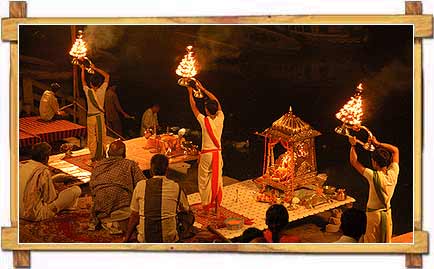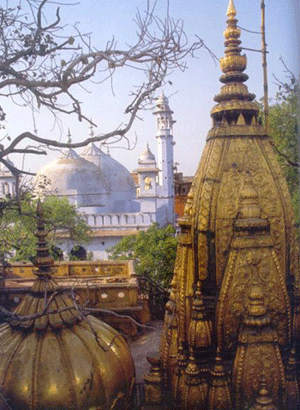Rajghat , one of the many ghats in Varanasi used to be a important ferry ghat in the 19th century.Archaelogical excavations carried out near Raj Ghat revealed a variety of terracotta human and animal figurines which hed light on the cultural and political history of Varanasi from the Sunga to the Gahadaval times. The finds include 300 seals and tokens and numerous earthenware pots, besides some coins, beads, ornaments and other objects of domestic use made of pottery, stone, metal, shell, ivory, glass,etc.
The most remarkable finds from the archaelogical excavations consists of tokens of terracotta, impressed with the well-known obverse designs of the Imperial Gupta coins. Several heads from Rajghat which, though not exactly identical, show unmistakable similarity with the heads on the Roman coins. The modelling of the head,the proportion of the parts, the delineation of the nose, eyes and the chin and the treatment of hair betray classical features which are typical of the secular and divine heads occurring on the Greek and Roman gems and coins.These findings hint of a steady commercial and cultural exchange between India and the western world and reveal the importance of Varanasi as an international centre of trade and commerce on the one hand and culture and art on the other. This is considered valuable as so far the evidence regarding India's intercourse with the West as mainly based on the literary notices of the classical authors.The findings at Raj Ghat emerged as a more concrete evidence of the rich past of Varanasi. The collection unearthed during the excavations at Raj Ghat are carefully preserved and can be seen in the Bharat Kala Bhavan in BHU, Varanasi.
Raj Ghat lies south of the Dashaswamedha ghat and is on the road from Varanasi to Mughal Sarai Railway junction.The distance is approximately 8 kms from Varanasi rail head and is a unique place to visit while in Varanasi.
Subscribe to:
Post Comments (Atom)














No comments:
Post a Comment